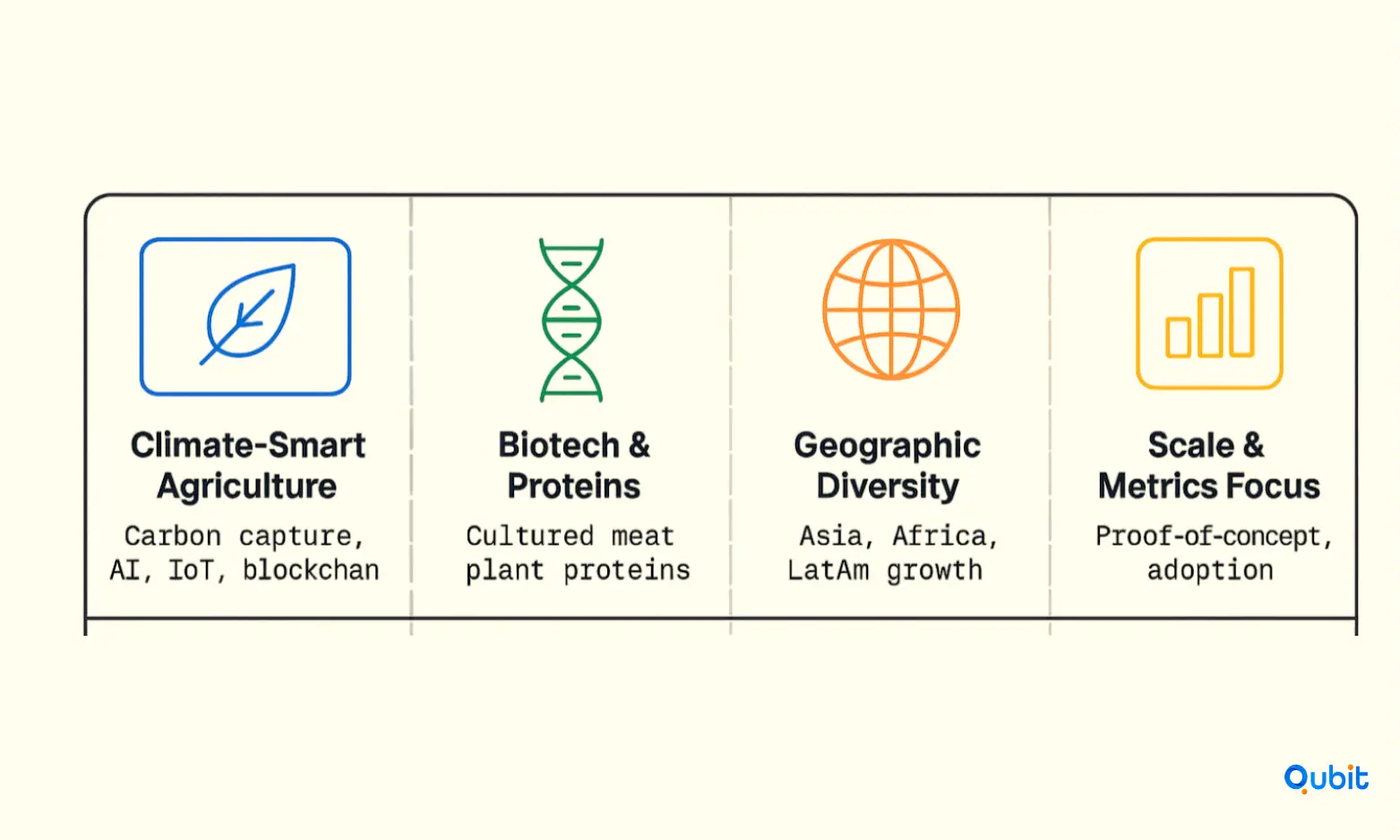The AgriTech sector is undergoing a profound transformation in 2025, driven by the urgent need for sustainable food production, climate resilience, and digital innovation across the agricultural value chain. As traditional funding routes—such as bank loans and venture capital, often remain out of reach for early-stage AgriTech startups and smallholder innovators, crowdfunding platforms have emerged as a powerful alternative. These platforms democratize access to capital, connect entrepreneurs directly with backers who share their vision, and foster vibrant communities around agricultural progress.
This comprehensive guide explores the leading crowdfunding platforms for AgriTech innovations, analyzes their funding models, and provides actionable strategies for founders seeking to leverage crowdfunding for product validation, community building, and growth.
Why Crowdfunding for AgriTech?
Crowdfunding offers unique advantages for AgriTech innovators:
- Democratized Funding: It enables startups, smallholder farmers, and social enterprises to access capital without collateral or the need for institutional backing.
- Market Validation: Campaigns provide immediate feedback from real supporters, helping validate ideas and refine products before large-scale rollouts.
- Community Building: Successful campaigns create networks of advocates and early adopters who can drive word-of-mouth growth and ongoing support.
- Flexibility: Platforms offer rewards-based, equity-based, and donation-based models, matching diverse project needs—from prototyping to scaling.
- Sustainability Focus: Many AgriTech projects emphasize climate resilience and social impact, attracting backers passionate about environmental and community outcomes.
Many agritech teams struggle in early rounds, but how to secure funding for agritech startups lays out a clear sequence of investor-ready milestones and sample term sheet clauses.
Trends Shaping AgriTech Crowdfunding in 2025

1. Climate-Smart and Digital Agriculture
With climate emergencies and food security at the forefront, funding is flowing toward startups specializing in carbon capture, regenerative agriculture, water-efficient farming, and digital farm management. Crowdfunding campaigns that demonstrate measurable environmental impact or use AI, IoT, and blockchain for transparency and efficiency are especially popular.
2. Biotech and Protein Alternatives
Innovations in cultured meat, plant proteins, microbial fertilizers, and gene-edited crops are seeing exponential funding growth. Crowdfunding enables these ventures to tap into consumer enthusiasm for sustainable diets and food tech breakthroughs.
3. Geographic Diversity
While North America and Europe remain leaders in AgriTech investment, Asia-Pacific, Africa, and Latin America are rapidly emerging as crowdfunding hotspots, supported by government programs and maturing startup ecosystems.
4. Investor Focus on Scale and Metrics
Backers and platform investors are increasingly data-driven, demanding robust business models, clear proof-of-concept, and scalable solutions with real-world adoption potential.
Types of Crowdfunding Models for AgriTech
- Donation-Based: Ideal for social impact, rural development, and non-profit initiatives.
- Rewards-Based: Best for consumer-facing products (e.g., smart farming gadgets, home grow kits) where backers receive early access or perks.
- Equity-Based: Suitable for startups seeking growth capital by offering shares to investors.
- Hybrid Models: Some platforms enable a mix of rewards and equity, or flexible funding where partial goals still unlock capital.
If you’re exploring initial checks, seed funding agritech startups explains which investors and grants align best with proof of concept pilots.
Top Crowdfunding Platforms for AgriTech Innovations
1. AgFunder
Model: Equity
Best For: Growth-stage AgriTech and FoodTech startups
Highlights:
- Connects entrepreneurs with institutional investors and high-net-worth individuals.
- Specializes in scalable, high-impact AgriTech ventures.
- Success Story: Apeel Sciences raised $110 million for food preservation technology, reducing waste and improving supply chain sustainability.
2. Kickstarter
Model: Rewards-Based (All-or-Nothing)
Best For: Consumer-facing AgriTech products and gadgets
Highlights:
- Ideal for validating product ideas and generating buzz.
- All-or-nothing model ensures only fully funded projects proceed, increasing backer confidence.
- Over 253,000 global backers; strong for smart farming devices, sensors, and home agriculture kits.
3. Indiegogo
Model: Rewards-Based (Flexible or Fixed)
Best For: Innovative, early-stage AgriTech solutions
Highlights:
- Flexible funding allows entrepreneurs to keep raised funds even if goals aren’t met.
- Over $2 billion raised globally; strong marketing and campaign support tools.
- Customizable perks and international reach make it ideal for unique AgriTech offerings.
4. Seedrs
Model: Equity
Best For: Startups ready to scale and attract long-term investors
Highlights:
- Offers shares to investors; strong campaign structuring and investor support.
- Builds trust through due diligence and transparent processes.
- Effective for AgriTech companies with growth metrics and expansion plans.
5. Crowdcube
Model: Equity
Best For: Scaling AgriTech ventures seeking substantial capital
Highlights:
- Over 1,300 successful raises and 1 million+ users.
- Robust network of dedicated investors.
- Ideal for startups looking to build a community of stakeholders and raise significant funding.
6. Barnraiser
Model: Niche Rewards/Donation
Best For: Local, sustainable, and mission-driven AgriTech projects
Highlights:
- Focuses on food, farming, and sustainability.
- Community of backers passionate about transforming the food system.
- Supports small-scale or social impact initiatives, especially in rural or underserved areas.
7. StartSomeGood
Model: Social Impact/Donation
Best For: Agroforestry, fair trade, and community empowerment
Highlights:
- Coaching and campaign support for mission-driven entrepreneurs.
- Both fixed and flexible funding models.
- Attracts engaged backers aligned with sustainability and rural development.
8. SeedInvest
Model: Equity
Best For: High-growth, venture-scale AgriTech startups
Highlights:
- Access to accredited investors and large fundraises.
- Handles regulatory compliance and due diligence.
- Ideal for biotech, smart farming software, and companies with proven traction.
How to Choose the Right Platform
1. Align Funding Model with Project Goals
- Social impact or rural initiatives? Choose donation or niche platforms (Barnraiser, StartSomeGood).
- Consumer products? Rewards-based platforms (Kickstarter, Indiegogo) offer broad reach and validation.
- Growth-stage startups? Equity platforms (AgFunder, Seedrs, Crowdcube, SeedInvest) provide access to serious capital and long-term investors.
2. Consider Funding Model Structure
- All-or-Nothing: Best for projects needing a minimum threshold to launch (Kickstarter).
- Flexible Funding: Suitable when partial funding can still drive progress (Indiegogo, StartSomeGood).
3. Platform Fees and Transparency
- Typical platform fees range from 5–8% of funds raised, plus payment processing fees.
- Review terms for transparency, support, and access to marketing tools.
4. Community and Exposure
- Platforms with large, engaged backer communities (Kickstarter, Crowdcube) offer greater exposure but higher competition.
- Niche platforms (Barnraiser, StartSomeGood) may provide more targeted, mission-aligned support.
To connect with backers who bring domain expertise, angel investors foodtech outlines the networks and mentorship support these investors provide.
Crowdfunding Success Strategies for AgriTech Startups
1. Craft a Compelling Narrative
- Highlight the environmental, social, and economic impact of your innovation.
- Use storytelling to connect with backers’ values and aspirations.
- Showcase the problem, your solution, and the difference it will make for farmers, consumers, or the planet.
2. Visuals and Transparency
- Use high-quality images, explainer videos, and infographics.
- Provide transparent breakdowns of funding use, timelines, and milestones.
3. Early Community Building
- Build an audience before launch via email lists, social media, and partnerships with agricultural organizations.
- Engage influencers and advocates in the AgriTech and sustainability space.
4. Reward and Incentive Design
- Offer meaningful, tiered rewards for backers (early access, branded merchandise, exclusive updates).
- For equity campaigns, communicate the growth vision and exit opportunities clearly.
5. Regular Updates and Engagement
- Keep backers informed with campaign progress, product development, and impact stories.
- Encourage feedback and foster a sense of shared mission.
Government Support, Incubators, and Hybrid Funding
Government Schemes
National and regional governments are increasingly supporting AgriTech innovation through grants, subsidies, and incubator programs. In India, for example, the Startup India Initiative and RKVY-RAFTAAR offer funding, mentorship, and go-to-market support for AgriTech startups.
Incubators & Accelerators
Programs like Atal Incubation Centres (AIC) and FIED – IIM Kashipur provide financial assistance, mentorship, and market connections, often in partnership with crowdfunding campaigns to amplify impact.
Hybrid Approaches
Many successful AgriTech startups combine crowdfunding with grants, angel investment, or accelerator support, maximizing both capital and credibility.
Joining an accelerator can boost both funding and market access, and agritech accelerator programs catalogs the top programs along with their investment terms and mentorship highlights.
Risks, Challenges, and Best Practices
- Campaign Failure: Not all campaigns succeed; research shows only about 30–40% of AgriTech crowdfunding campaigns meet their goals on major platforms.
- Regulatory Hurdles: Equity crowdfunding is subject to securities regulations; platforms like Seedrs and SeedInvest handle compliance but require rigorous due diligence.
- Reward Fulfillment: Underestimating logistics can damage trust; plan carefully for delivery and communication.
- Market Education: AgriTech innovations often require educating backers on technical or scientific aspects—use clear, accessible language and demonstrations.
Case Studies: Crowdfunding Success in AgriTech
Apeel Sciences (AgFunder)
Raised $110 million for food preservation technology, leveraging AgFunder’s network of institutional and impact investors to scale globally.
Smallholder Irrigation Device (Kickstarter)
A startup offering a low-cost, solar-powered irrigation controller raised over $250,000 on Kickstarter, validating demand and securing pre-orders from smallholder farmers worldwide.
Urban Farming Kit (Indiegogo)
A modular hydroponics kit for urban dwellers raised $180,000, with backers receiving early access and exclusive updates, helping the startup refine its product before retail launch.
Community Agroforestry Initiative (StartSomeGood)
A social enterprise raised $60,000 to launch a community-led agroforestry project, using StartSomeGood’s coaching and flexible funding to mobilize rural support and attract NGO partners.
Conclusion
Crowdfunding platforms have become essential tools for AgriTech innovators in 2025, bridging the gap between visionary ideas and the capital needed to bring them to life. By strategically selecting the right platform, crafting a compelling campaign, and leveraging hybrid funding models, founders can accelerate their journey from prototype to impact, while building a passionate community of supporters along the way.
At Qubit Capital, we understand the challenges startups face and are here to help you connect with investors who align with your vision. Let us guide you through the process and scale your startup to new heights. Get in touch with us at Qubit Capital to connect with the right investors and scale your startup
Key Takeaways
- Crowdfunding democratizes access to capital for AgriTech startups, enabling innovation in climate-smart, digital, and sustainable agriculture.
- Platform choice should align with project goals, funding needs, and target audience—equity for scale, rewards for consumer validation, and niche platforms for mission-driven initiatives.
- Success depends on storytelling, community building, and transparent campaign management.
- Government schemes, incubators, and hybrid funding models can amplify the impact of crowdfunding.
- Risks include campaign failure, regulatory hurdles, and reward fulfillment challenges—mitigated by careful planning and clear communication.
Frequently asked Questions
Which crowdfunding platform is best for AgriTech startups?
It depends on your project: AgFunder and Seedrs for equity and scale, Kickstarter and Indiegogo for consumer products, Barnraiser and StartSomeGood for social impact.


 Back
Back



